NO CARRIER! The Lost World Of The BBS
NO CARRIER! – The Lost World Of The BBS
“Radio Killed The Video Star.” Or in this case the Internet killed the BBS SysOp, in one of my first blog posts (On the original Windows IIS blog), I mentioned that I used to be a BBS System Operator, known as a SysOp.
What is this BBS I speak of? Before your phone or cable company offered to give you a permanent connection to the internet via DSL, or CABLE. There were generous people like myself that would sacrifice one of their computers to allow you to use a device called a modem, that connected your computer to a plain old telephone line that allowed you to call another computer running specialized software to exchange e-mail, post public messages, play simple text based games, or trade the latest in public domain or pirate software.
This specialist software called a BBS program which in my case was the premiere BBS package for the Commodore 64 called IMAGE BBS v1.2. The software came on a double sided disk which held 170k per side. That is 340Kilobytes, not megabytes or gigabytes! This may not seem like a lot these days!, but for its day, it was a HUGE program. I first went online with a 20MB Lt. Kernel Hard Drive, and later upgraded to 105MBs. Again in 1993 on a Commodore 64 computer this was HUGE! Not to mention expensive. Used, the 20MB hard drive system cost $350. Brand new would set you back about 750.00!
The modem connected the computer to the telephone line and transferred data at a maximum speed of 2400 baud, which meant 2400 bits per second. Or 2400 divided by 8 is a whopping 300 bytes per second. Think about this. An extremely SLOW internet connection would be over 3,000 bytes per second.
One of the really cool things about a BBS that I feel has been lost with the internet, is that each system had it’s only theme, focus, and in some respects it’s own personality, depending on the SysOp, who the “regular” callers were, and the main focus of the BBS. Each system took on it’s own unique personality. Additionally for those that called and posted regularly it because a mini online community.
I really enjoyed running my BBS, and made several long lasting friends throughout the experience. It also taught me how to support my users, and taught me a great deal about programing in Commodore BASIC, it was allot of fun writing small programs and making modifications to the system.
There are several IMAGE BBS systems still being run today, accessible on the internet through TELNET. One of the most popular IMAGE BBSs in San Diego back in 1994. Commodore Image is online at cib.dyndns.org 6400. You can access it either through a normal TELNET client using ANSI COLOR and IBM graphics or through a PETSCII terminal emulator called CG TERM.
I thought it would be fun to interview some of the people that ran Image BBS systems for the blog, I received replies from Larry Hedman (X-Tec of Commodore Image), Eric Lamb of Buccaneer’s Den (not currently in operation.), Ryan Sherwood (PINACOLADA), who also is the founder and moderator of the IMAGE BBS group on Facebook, and Al LaRosa (Of Bucko), who is chalk full of history and trivia surrounding Image BBS, and New image Software.
-
What was your first experience with telecommunications, What was your first modem and it’s speed?
Larry: I first started telecommunicating on a Commodore 64 with a VolksModem at 300 baud. I used it for calling Bulletin Boards I found listed in Commodore magazines that I subscribed to which were Compute, Compute’s Gazette and RUN Magazine. I also had an account on Q-Link that I called frequently.
Eric Lamb: I had purchased my first computer, a brand new Commodore 64 when I was in 7th grade. A year or two later, an ad in Commodore Power/Play magazine (I believe) offered a package deal. A VicModem running at 300 baud, and a free month of Q-Link for something a special price. I had been reading about modems, Q-Link, and even the personal BBS for a bit, but had never tried it. I ordered this kit. As this was an acoustic modem, I found that all of the cheap phones in our house wouldn’t work… I had to borrow an old phone from a friend, and I was hooked! I used that 300 baud modem for at least a year, most likely longer!
Ryan Sherwood: I had a neighbor, Matt, who had a Commodore 64 and a modem (and two rooms full of Commodore and Amiga stuff). I don’t remember what type of modem it was, but it was probably a 2400 BPS modem. We used CCGMS and dialed local BBSes (in Washington state, the US) like Time Takers’ BBS, Oakbrook Express, The White House, and others. The first modem I was able to buy for myself was an Aprotek Minimodem-C 24. I loved having all the LEDs on it, they were so informative. The first BBS I dialed with it was the Aprotek support BBS in Rogue River, Oregon. There I downloaded some SIDplayer *.mus files, but didn’t know you needed SIDplayer to play them. So I emailed the sysop, and thankfully he answered my question. I downloaded a version of SIDplayer and got that working. I remember doing a lot of early morning downloads in the summer because the long distance rates were cheaper. I got a neat version of Star Trek, and downloaded lots of little demos.
Al DeRosa: First experience with a modem was a 300 baud Mighty Mo, I got it for Christmas as an afterthought when I bought my first C64.. I called Compuserve and was paying $6 an hour for using it..
-
What made you become a SysOp?
Larry: I got the idea to start my own BBS from calling other boards. The idea of running a BBS seemed interesting and at the time I was stationed at a Naval Air Station in Adak, Alaska. There were no Bulletin Boards being run there so I decided to start one to see if there would be interest locally. The interest was there, and I soon began receiving numerous calls from people with computers on the island. That blossomed into forming a computer users group, eventually growing to about 60 or so members. I served as president of the Adak Computer User’s Group (ACUG) for about 2 1/2 years.
Eric Lamb: Once I discovered the world of the BBS, I made many local friends who ran one. I even was asked to SubOp on a couple of boards, my first SubOp role was helping a friend out who was running an Atari ST BBS. I loved it. I somehow convinced my parents into letting me have my own phone line (they hated me hogging the phone anyway) and I knew I had to run my own.
Ryan Sherwood: I liked the idea of the community it created. People would get together, write messages to each other, play games, try to date each other, read interesting text files about the Commodore and anything else you cared to put on the BBS. I wanted a piece of this action!
Al DeRosa: Paying $6 an hour for CompuServe, I called a local BBS and I was hooked. I NEEDED to run a BBS.
-
Did you always run Image BBS? If you ran other software which package for the Commodore 64 did you run?
Larry: It’s hard to remember what all software I ran my BBS on but it seems I started using All American BBS software and a few others. Eventually, I bought Cnet 11.0 and later upgraded to 12.0. That’s probably when I bought my first hard drive, a Xetec Lt. Kernal 20 meg.
Eric Lamb: I started out very small. My first couple of attempts at running a BBS was off of a single 1541 drive. The first package I ran was AA BBS, which you could download a shareware copy off of Q-Link. It wouldn’t time out, but it had messages asking you to pay for it for an upgrade. It was also rumored that there were back doors in the code… I didn’t care, I ran that package for a while… Then I started looking for others… I ran Color BBS, Ivory, EEBBS, and then discovered C-Net. I LOVED C-NET… My first version was 10.0. I ended up buying more drives to set up a better BBS. I had two 1541’s a SFD-1001, and two CBM 8050 dual drives. I stayed with C-Net from 10.0, to 11.1a, and maybe 12… not sure… right around then I discovered Image BBS, which was an offshoot of C-Net (most people know this story if they know the history of Image.) I ran Image until my BBS went down in the early 90’s, probably 1993.
Ryan Sherwood: No. While I was saving up to buy Image BBS, I downloaded some other smaller BBS programs, just to see what they were like. I tried Fantasy Role-Playing BBS, C*Base, one I think was called “Micro-RAM BBS” (entirely contained in RAM, when you wanted to save messages, you broke out of the program and saved it), and some others.
Al DeRosa: I first put my BBS up on November 22th 1986, I ran CNet 10.0 (Pirated of course) then when I decided to put the BBS full time I bought a copy of CNet 11.1a from Perspective and ran it until 12.0 came out, when 12.1 and the debacle of that came about I followed Dan Gladden and Fred Dart to New Image.
-
-
What made you switch to IMAGE BBS?
Larry: I switched to Image BBS when Don Gladen split from Perspective software. I had a choice between DS2 and Image. I chose Image because of the friendship I had developed at the time with Fred Dart (The Chief). Since Fred was going with Image, I followed along.
Eric Lamb: A friend of mine told me about Image, I believe it was actually my Co-Sysop or (SubOp) at the time. I loved it right away.
Ryan Sherwood: What made you switch to IMAGE BBS? I really liked the look and feel of it. I think the newly installed SIGs (special interest groups) on a local BBS called Time Takers did it for me. I naively asked the sysop, Sysop Jack, if I could have a copy of it. He tactfully pointed out if was a commercial product and put me in touch with New Image Software in Utah. Sysop Jack and I had a few phone conversations after that, about being a sysop. I still remember excitedly running home from the post office, reading through the manual (it even had that nice plastic cover, so it must be really professional!). Setting it up on 1 1541 didn’t work very well—there was some problem getting to the waiting for call screen. That resulted in a few phone calls to my mentor, Sysop Jack, and later to Fred Dart. They both was very patient and kind, and we did a lot of troubleshooting over the phone. Later I bought a second 1541 from a high school friend. That made things a little less painful. The whole experience increased my resolve to save up for a Creative Micro Designs hard drive, and several years later, JiffyDOS.
Al DeRosa The debacle of 12.1!
-
-
-
What was the primary focus of your BBS?
Larry: The primary focus of Commodore Image BBS was to provide a means of communications via message boards for the local community in Alaska. As my BBS grew, it later became a primary support board for Image Sysops. I provided access to Image updates, files written by other Image Sysops and technical support for those who needed it.
Eric Lamb: My BBS was named “The Buccaneer’s Den”. It had a few main points. It was somewhat Ultima themed (I actually called myself Lord Brittish then, with the purposeful spelling error to separate me from the Ultima creator). I also had pirated software in small amounts, but we certainly discussed pirate software a lot and where to get it.
Ryan Sherwood: Role-playing and Dungeons and Dragons. I’d still like to write a mode of the BBS where you get to different places by typing commands like in a text adventure. This was inspired by another local Apple BBS called “Dura-Europos.” I’ve customized the new user login sequence somewhat to reflect more of an Arthurian theme, but never dug around much in Image’s BASIC code to do anything more to reflect this theme, except name a few sub-boards things like “The Dragon’s Eye Bar & Grill.”
Al DeRosa: Support and legit software. I was NISSA NorthEast Headquarters for about 5 years. Also was the NISSA Net Administrator till I took the BBS down..
-
-
-
Can you share an especially memorable story regarding your BBS?
Larry: I don’t recall any particular memorable story but I think the highlight of my experience with Image was when Fred Dart decided to remove NISSA from the New Image company and turn it over to the primary support boards. It was “The Chief” who suggested to Al DeRosa “BUCCO” to consider me as one of the administration boards for the newly reorganized NISSA group. I considered that an honor and I took the position with enthusiasm.
Eric Lamb: This is a tough one… I had so many. I made many friends through my BBS, many of which I still talk to. I also can trace my current career, in a way, back to my BBS. I also remember the local BBS parties here in Salt Lake City, Utah, and I even hosted or helped organize several of those. I loved them. One last story I remember was when I went with a group of friends in high school to a haunted house at Halloween time. As we were going through, a “monster” jumped out, then he stopped, took his mask off and said “Hey! It’s Lord Brittish!” My friends, who were not modem geeks, were stunned… Good times!
Ryan Sherwood: Not really. I lived in a small town and didn’t have many callers.
Al DeRosa: Becoming the record holder for calls without a crash or reboot, I ran the BBS for well over 1500 or 1800 calls before it finally crashed while I was beta testing my version of Utopia. The other memorable event was getting a call from Don Gladden who I had only spoke to once before congratulating me that I was getting my Image Software and that my serial number was E0001
-
-
Did you allow pirated software on your BBS?
Larry: Absolutely not.
Eric Lamb: Yes! I was a rebel back then…
Ryan Sherwood: Yeah, it was pretty common back in the day, and especially after I got Dragon’s Eye on telnet in the 2000s, people would upload copyrighted/pirated stuff. I did a lot of pirating myself, I guess, by calling long distance BBSes. There were no Commodore retailers anywhere nearby. Later on I discovered Tenex and started buying things through the mail
Al DeRosa At first yes, but then I got scared and took it all off..
-
-
How many computers did you have in your house?
Larry: It depends on what time frame. In the ’90’s I owned one C=128DCR, three C=64’s, One C=64C, one SX64 and a VIC20.Eric Lamb: One… toward the end of my run, I had a spare, but only one monitor.
Ryan Sherwood: Two, An IBM XT (with no modem), and the Commodore 64.
Al DeRosa At that time I only had 2 a 128 and a 64, the BBS ran on the 64 and I used the “Muxed” 128 as my personal computer. Since then my house has become IBM! I own and have in my possession every PC ever made from a XT up to the latest and greatest.
-
-
-
Did you run any other BBS software after Image BBS?
Larry: No
Eric Lamb: Nope, Image was the last product I ever ran.
Al DeRosa When I took the Image down, I went Amiga and can’t remember the name of the software but it was modifiable like CNet Amiga. Then I went over to the PC World, and ran Wildcat 95..
-
What year did you take you’re BBS down, and what was the primary purpose for taking it off line?
Larry: I took Commodore Image BBS down in 1996 not by choice but because my equipment was damaged by lightning.
Eric Lamb: I believe I took my BBS down early in 1993, maybe even the tail end of 1992… I can’t quite remember… Traffic had slowed a bit, although the Internet had not quite hit the general public yet, but the Commodore was all but dead… The company was gone (or close) and the C-64, while still having a large following was really looking long in the tooth.. My priorities were changing as well. I was in college, I had a job, and real life started to take over. I also started having some hardware issues with the computer and drives, so I shut it down.
Ryan Sherwood: I’d graduated high school in 1994 and moved out. There were really not many frequent callers for about 4 or 5 months, and decided it wasn’t worth tying up a phone line for such little actual use.
I’m currently trying to bring back The Dragon’s Eye to telnet (for the second time) and join a reincarnated Image network, although the process is still in the bug-squashing stages. I do run a Facebook group devoted to Image BBS which anyone is welcome to join: https://www.facebook.com/groups/141819789446/
Al DeRosa: I took my Image down in 93, ran Amiga BBS till 94, then went on Wildcat till 96, then took that down when Fred Dart recruited me to help write Image 2.0, which I ran till 97 when all of my hard drives on my Lt Kernal went bad, I just didn’t have the heart to buy another 85 meg HD to put in it only for it to crap out like the last 2 did. From that point on I was done with BBS’.
-
Myself and my fellow SysOps had allot of fun and immensely enjoyed the opportunity to interact with the people who called our systems, it also taught me valuable skills that I still use today in my work as a system administrator! Being a SysOp was hard work, sometimes very frustrating, and other time allot of fun! I would like to thank Larry Headman, Eric Lamb, Ryan Sherwood, and Al DeRosa for also sharing their experiences. If you would like to download a copy of Image BBS v1.2a, and look at it on VICE. Both disks are available here.
ftp://ftp.zimmers.net/pub/cbm/c64/comm/bbs/image12a.zip
Please give Larry’s BBS a try at telnet://cib.dyndns.org:6400
To experience Commodore Color Graphics (C/G), you can download CG Term here.https://paradroid.automac.se/cgterm/

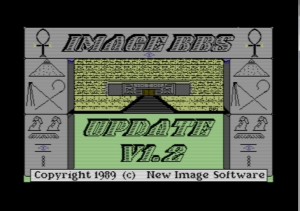
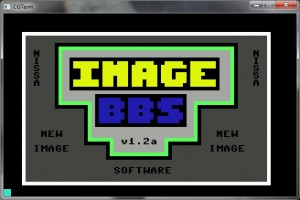
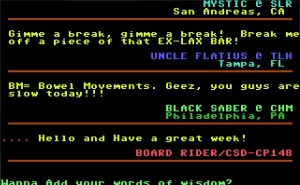
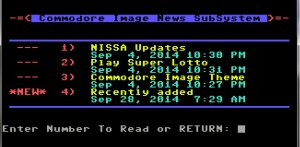
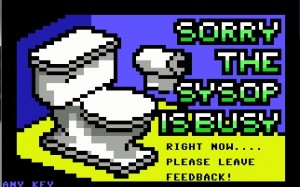
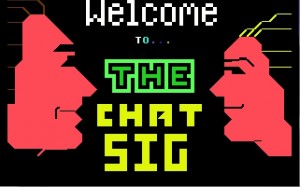
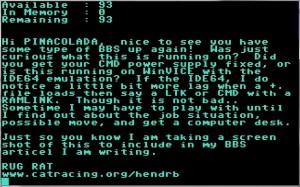
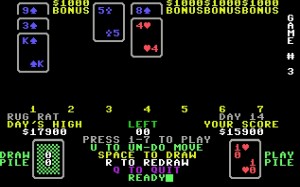
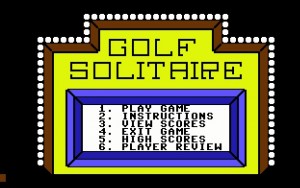
I ran an Image/New Image BBS in Columbus, Ohio for some years. When I finally switched to a Commodore Colt PC I ran it on WWiV software where you got the source code in C. It was fun… The name was Asgard (how original, huh?) and of course I was Odin and user #2 was my son “Thor”. hahaha Sad but true as Metallica says. These guys stories pretty much mirror mine in one way or another. I never found bbs software which allowed me as a sysop to do the things I could so easily as New Image did. WWiV was the closest. And of course… Call Asgard BBS (614)491-****!!! 2400 baud – 24/7 Games, Message Bases and Warez! lolololololol
I have updated the link to CGTerm (on paradroid.se). The link is now working.
extremely desperate to find a copy of Blue Board Software.
Does anyone have a copy?
Thank you for visiting Brent’s World, from what I can gather you are not the only one looking for this particular BBS package.